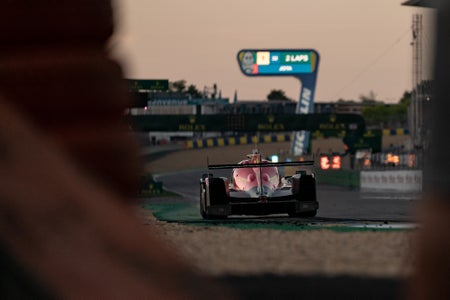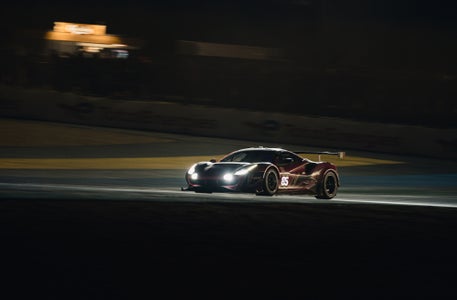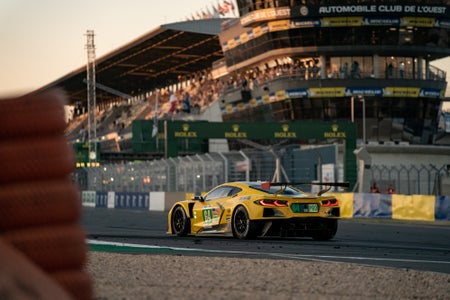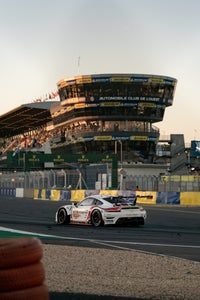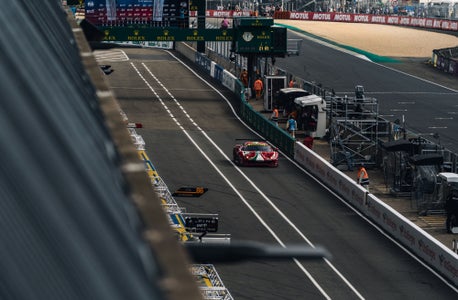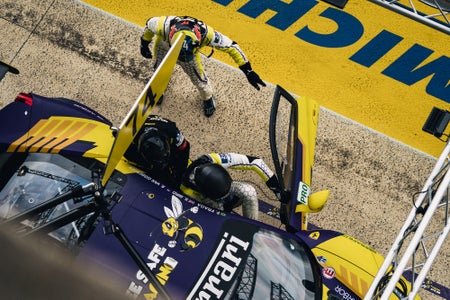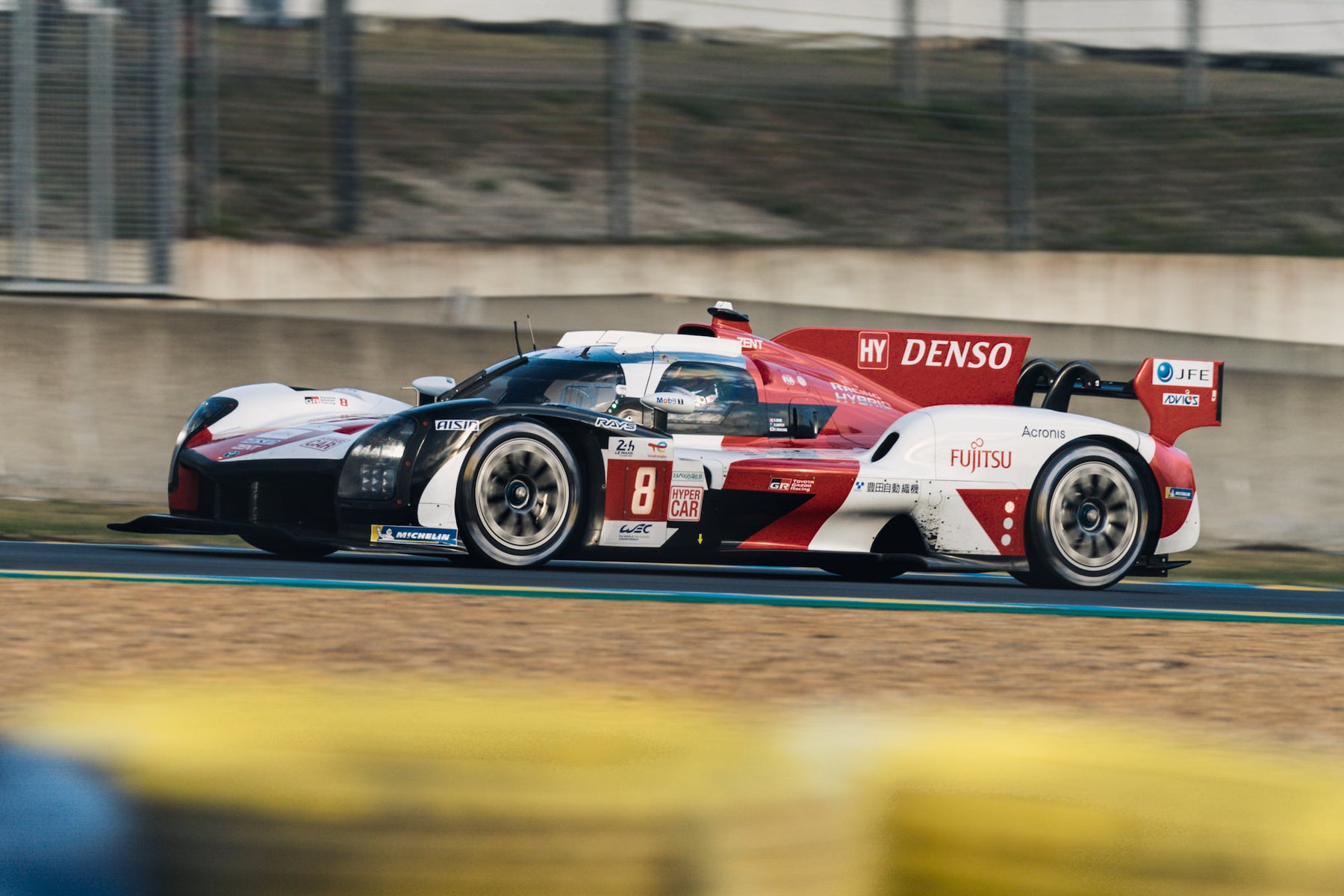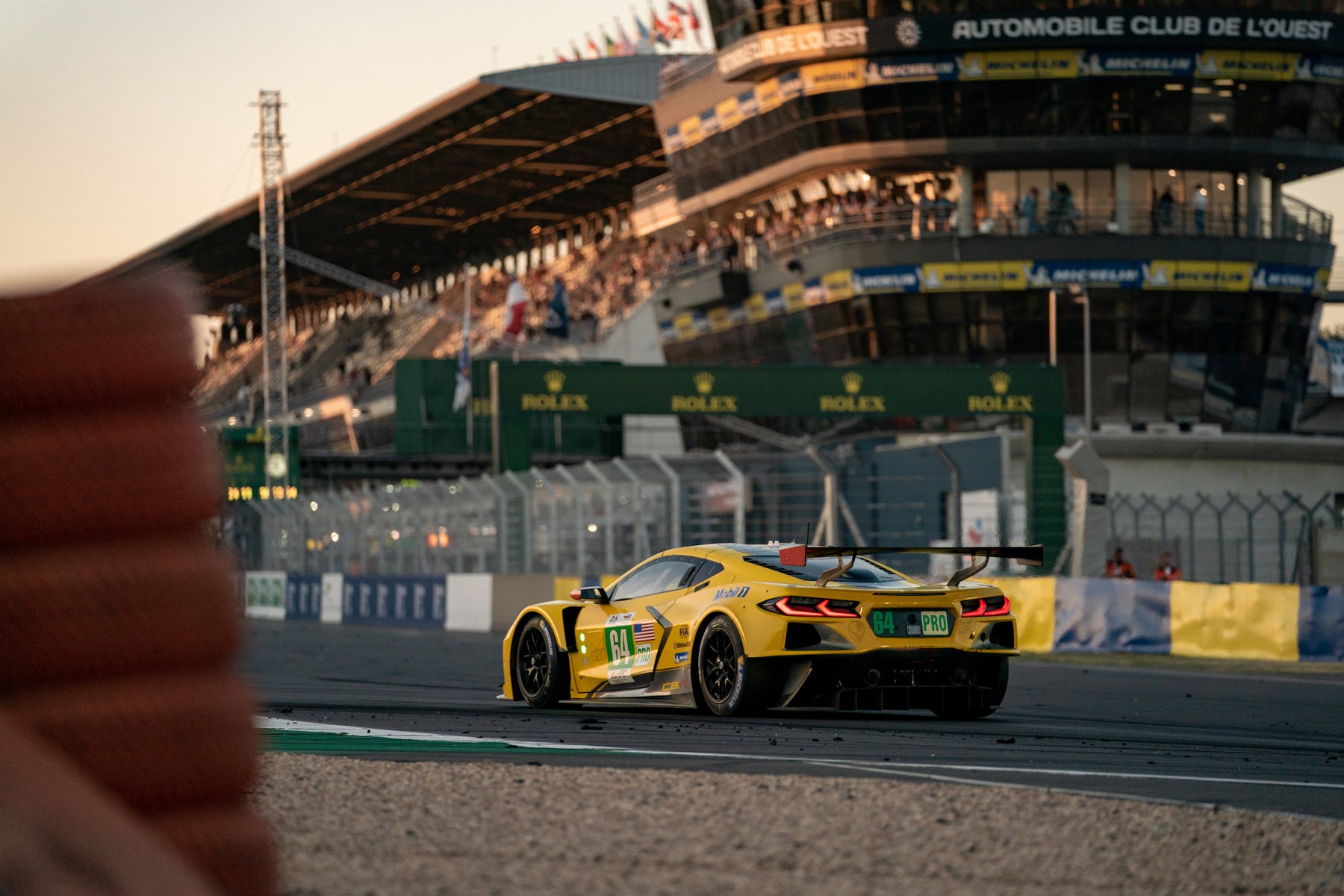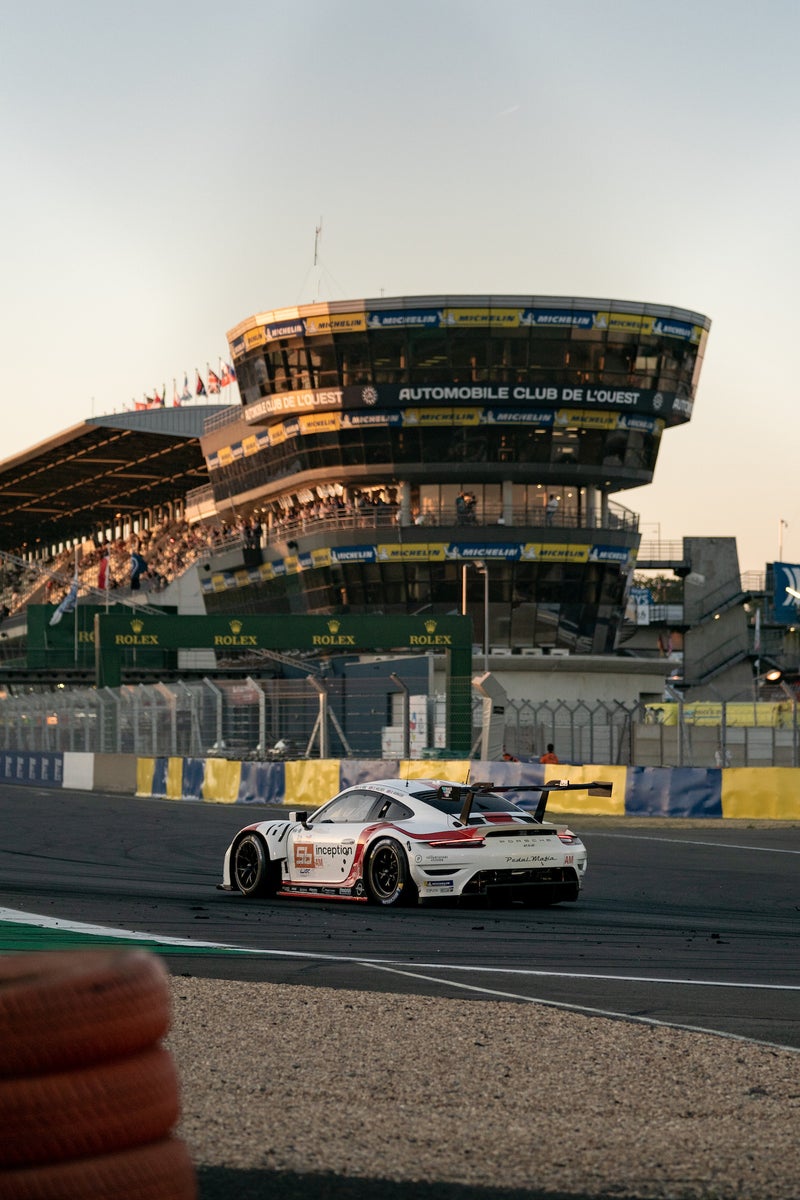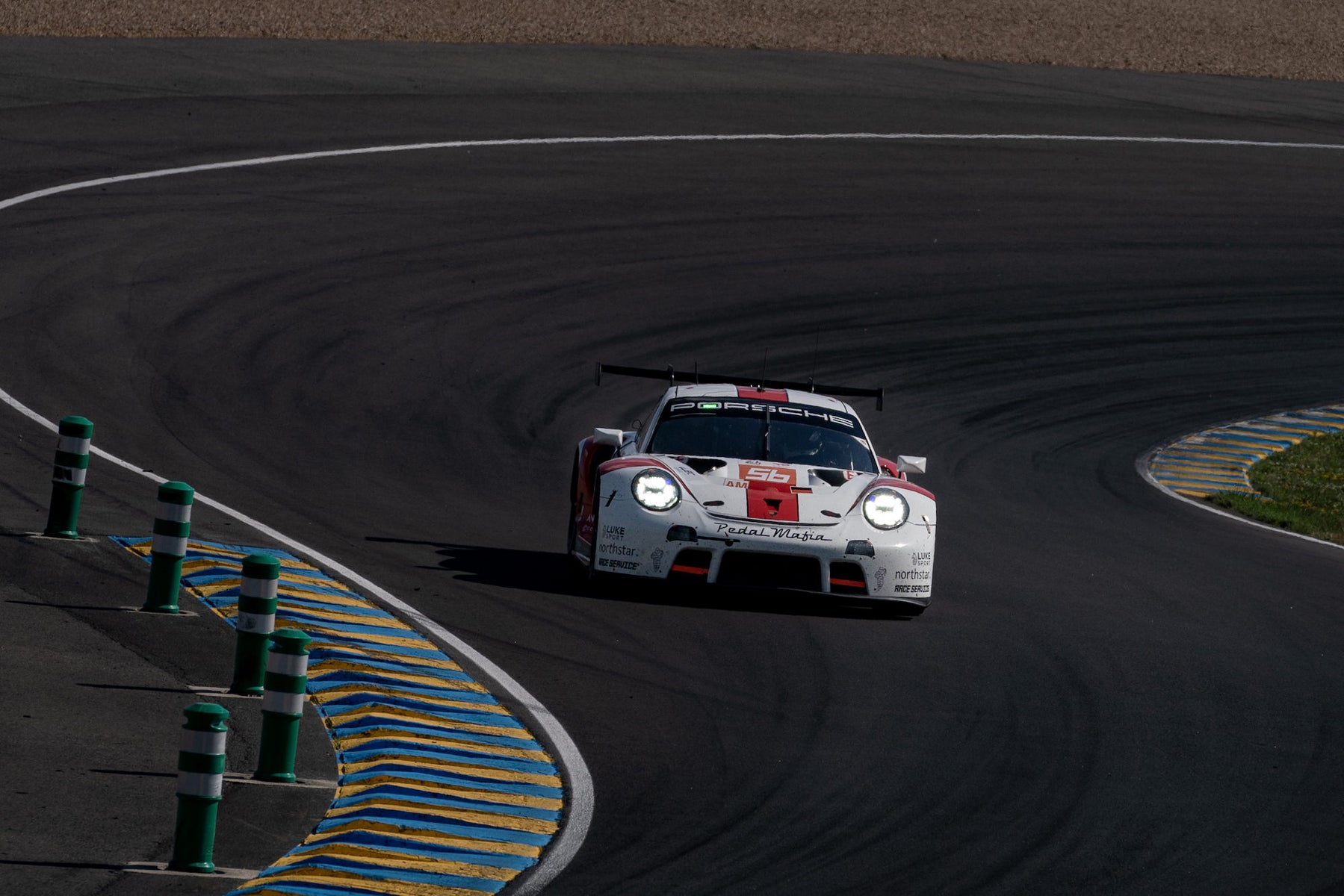Photographer Zac McGowan (@zxcimages) started working as a professional photographer just over a year ago at a performance car dealership. “There I photograph all vehicles for advertisement on the forecourt which is hard work, however I also get the chance to take some more artistic images for social media and advertising use,” he says. “The latter side of things is what got me into automotive photography, and let me work on my own style of image and processing.” He recently decided to go to Le Mans, France with a few friends to watch the annual endurance sports car race, 24 Hours of Le Mans. At nearly 100 years old, the race is still considered by many to be the pinnacle of motorsport and McGowan wanted to capture the race, throughout the day, night and day again with his Sony Alpha 9 and Sony 70-200mm f/2.8 G Master. We connected with him to learn more about how he captured some of our favorites.
Photographer explains how he captured unique images that stood out from the tens of thousands of others taken at the pinnacle of motorsport, the 24 Hours of Le Mans, and he did it without a pit pass.
The Scene
The trip for McGowan was technically a holiday, not a work trip, but like any photographer would, he saw it as a chance to create. “The weather couldn’t have been better, and the wine was good too. However I did also see it as an opportunity in terms of photography, and a chance to shoot something automotive, but very different to my usual work. I took with me my Sony Alpha 9, Sony 70-200mm f/2.8 G Master and a few other lenses along with my trust Alpha 7 backup body, which is still a great bit of kit and a body which really got my photography career started.”
He didn’t have media accreditation for the race, so took up the challenge to get professional-caliber shots from the general admission areas behind the protective fencing and safety measures in place for the general public. “I do like a challenge, and so every bit of track action saw me hauling my gear around and trying to work some kind of magic in order to create something that didn’t look like every other photo of some race cars through a blurry fence from ever so slightly too far away to see any real detail. Though this description could probably fit two thirds of the shots I took as I tried to figure out how I could differentiate my images from the tens of thousands of others that were being taken at the very same race.”
The Gear
For McGowan’s style of shooting, his Sony Alpha 9 is a perfect fit. “The Sony Alpha 9 has become my go-to body for 99% of my shooting. I went for it mainly due to its electronic shutter and high-speed capability. Shooting performance cars often involves a lot of burst shooting, and 20 frames per second means that I’m always confident I’ll get a usable shot. The Alpha 9’s sensor does a fantastic job, I find that the 24 megapixel resolution is enough for any prints I want to make, and it’s not so high that I have to buy ridiculously large memory cards. The UHS-II slot comes in handy for shooting continuous bursts, and throughout my weekend at Le Mans I didn’t notice any buffering issues slowing the camera down at all, despite shooting in RAW the whole time. The compressed RAW files hold plenty of data, and this was extremely nice to have during the night time track action, where the low light capability of the Alpha 9 really impressed me.”
He continues, “The Sony 70-200mm f/2.8 G Master was my choice of lens for 90% of my time at the track, simply because without a media pass I was so far away from the action that I needed the 200mm end of the zoom range most of the time to get any sort of decent framing of the cars on track. Fortunately, this also happens to be an incredible lens, and I don’t think any of my others come close to the sharpness of the G Master. Having a wider end of 70mm was also a nice comfort when panning, as it can be extremely hard to follow a car doing upwards of 200km/h when you’re at 200mm. The OSS is also a nice touch as I wasn’t using a tripod at all, this helped keep things sharp when using slower shutters to capture the movement of the cars and make a more dynamic image.”
Image #1 – Car 708
The 24 Hours Of Le Mans is unique in several respects. The "track" which is known as the Circuit de la Sarthe, is on a combination of dedicated race track and roads that are public thoroughfares for most of the year and that geography let McGowan explore some unique vantage points. “For the shot of car #708, I was up on a bank under the trees (mainly hiding from the sun, I burn extremely quickly!) above the bit of straight before Tetre Rouge,” he explains. “As I mentioned, the sun was belting down on the track, and I noticed the side of the track under the trees offered a great contrast. I had just sat on the grass bank having a mess about with settings, and wondered if I could pan through the silhouette of the trees. The main challenge was that I had no ND filter with me, and the sun was directly up in the sky with zero cloud cover, making for an extremely bright track behind the trees. After setting my shutter speed to 1/50-sec. to create a nice motion blur, The track was hugely overexposed, and so I hesitantly adjusted to the 70-200’s maximum aperture of f/22.”

Photo by Zac McGowan. Sony Alpha 9. Sony 70-200mm f/2.8 G Master. 1/50-sec., f/22, ISO 100
He continues, “I was stunned with the sharpness at this aperture as a lot of lenses would give a lack of sharpness. However the car is tack sharp, and in fact you can almost read the tiny drivers name stickers on the roof of the cockpit. I started of on single shooting mode, however a lot of the time the car would end up behind the trees or not very clear, but after changing to burst I could fire away, the autofocus performing excellently in locking on to the car, and choose a frame in which the car was well positioned in between the branches. I think this creates a stunning scene, the car really pops out from the darkness of the trees, and the blur of the trees intertwined with the bright blue and yellow on the track gives an awesome sense of the speed at which these machines fly past.”
This image didn’t require much editing, which McGowan says is often the case with pan shots as there’s no detail to bring other than on the car itself. “I adjusted the exposure, as the highlights were still a little bit much for my liking. Using the automatic subject masking in Lightroom (which has improved the quality of my life infinitely since it was released) I inverted the selection in order to make adjustments to the area around the car. I took the black level down to add to the contrast between the light on track and darkness of the trees. In terms of color, I did two things to this image. Firstly I wanted to change the blue and yellow on the track slightly, I increased the luminance to emphasize the sunlight on track, and then desaturated them ever so slightly as I didn’t want them to distract too much from the car itself. I then increased the saturation of the reds in order to really make the car pop, which finished off that image nicely.”
Image #2 – Car 88
Photographing racing around the track at night was a new experience for McGowan and he wanted to experiment with his camera to create photos that captured that experience. “Shooting moving cars at night was new to me," he says. "I’ve never tried it and I had no idea what settings to start with. This shot was taken on the second of two Thursday night practice sessions, so I had done some figuring out settings the previous night and was determined to get some decent shots of the cars in the dark. This session we watched from Mulsanne corner, which is a sharp bend with a difficult braking zone after one of the longest, fastest straights in motorsport. The sharp bend played to my advantage as I realized that shooting a car in the foreground could be timed with cars entering the corner in the background, which is what occurred in this particular shot, and this gave the image a pleasing vertical composition.”

Photo by Zac McGowan. Sony Alpha 9. Sony 70-200mm f/2.8 G Master. 1/125-sec., f/2.8, ISO 400
He continues, “I positioned myself at the exit of the corner and planned to picture one car on the exit as another entered the corner (resulting in the second car being directly above the subject car in the shot). I shot at 1/125 to capture a small amount of motion blur as I found that a faster shutter made for a rather lifeless image, as if the car was just parked still on the track. I opted to shoot wide open at F/2.8 to let as much light in as possible in the darkness, and also give a nice amount of blur to the cars in the background on the entry of the corner, thus helping to make the Porsche at the center of the image really stand out. ISO 400 was just enough to get some detailed shadows, but I did not want to go too high and blow out the headlights. The body of the car is by no means lit up like a lot of motorsport images you will see shot in darkness, but I think that keeping the focus on the headlights provides a much more atmospheric feel to the image.
Of all of his images from Le Mans, McGowan says this one was the most difficult to edit. “I had to play around for a while with this one, trying to recreate the atmosphere at the track in the darkness. Firstly I darkened the background and brightened the subject car using the auto masking, just to make the Porsche stand out a bit more, as it was a bit of a silhouette in the RAW image. I then raised the black level of the whole image, which gives a slight cinematic look to it, and I felt that matched how I saw the cars at night, it was ever so slightly misty and this faded look sort of replicates that as the RAW image didn’t really show it. When it came to color grading the shot I went for quite a desaturated look, which is different from typical sports photography but I believe it suits the night time photos very well. Again not a massive amount of editing, I think that the black level is what makes this photo, as it also brought out the headlights reflecting off the track, adding to the drama.”
Image #3 – Car 91
McGowan took this image during the Thursday afternoon qualifying session at an open area of the track just before the famous Dunlop bridge. “I positioned myself here on the exit of the chicane as there is a nice bit of elevation change, meaning the foreground and background layer nicely over each other, whilst the car sits between them and looks aggressively low as it points up the hill. I also liked the background, with the fans leaning over the first of two fences in a very similar way to me on the opposite side of the track, as I tried to get my lens as close up to the tall fence as possible in order to avoid seeing it in the shot.”
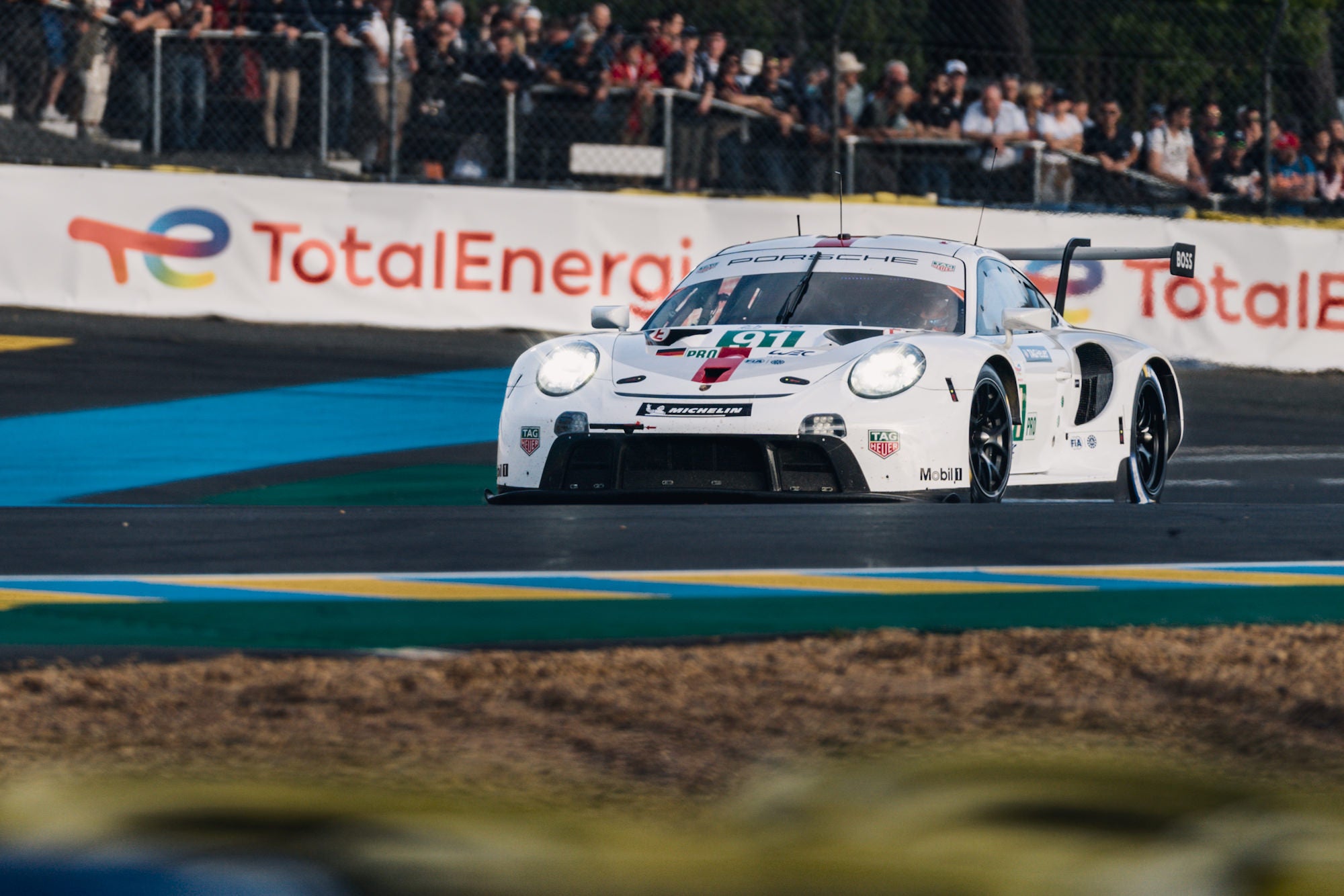
Photo by Zac McGowan. Sony Alpha 9. Sony 70-200mm f/2.8 G Master. 1/640-sec., f/2.8, ISO 100
He continues, “Shooting through the fence is the main reason I shot wide open at f/2.8, as this almost entirely blurs out the fence to the point where it's invisible, especially at 200mm. It just so happened I had to shoot at 200mm anyway as I was so far from the actual bit of track the cars were on. Fortunately due to shooting from this distance I could capture the whole car in focus from front to back even at f/2.8, and it’s even possible to see the heat coming off the back of the mid-engined Porsche. I shot at 1/640-sec. as it was enough to freeze the car resulting in a nice sharp image, but also allows for blurry wheels to add that sense of motion and bring the shot to life.”
McGowan decided to round this image out with some minimal edits. “The car looks so aggressive, and I think the composition does a lot of that, so it didn’t really need any extensive work to make it look any better,” he explains. “I went with quite an honest representation of the car and track, no changes to the colors, just a simple adjustment to bring out the shadows and then lower the blacks to regain that contrast which compliments the cars sporty look and stance. One thing I did was add a linear gradient from the bottom of the image, to darken the bright yellow and blue tire wall and gravel trap in front of me, drawing attention straight up toward the car.”
See more of Zac McGowan’s automotive photography on Instagram @zxcimages.

